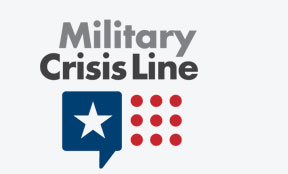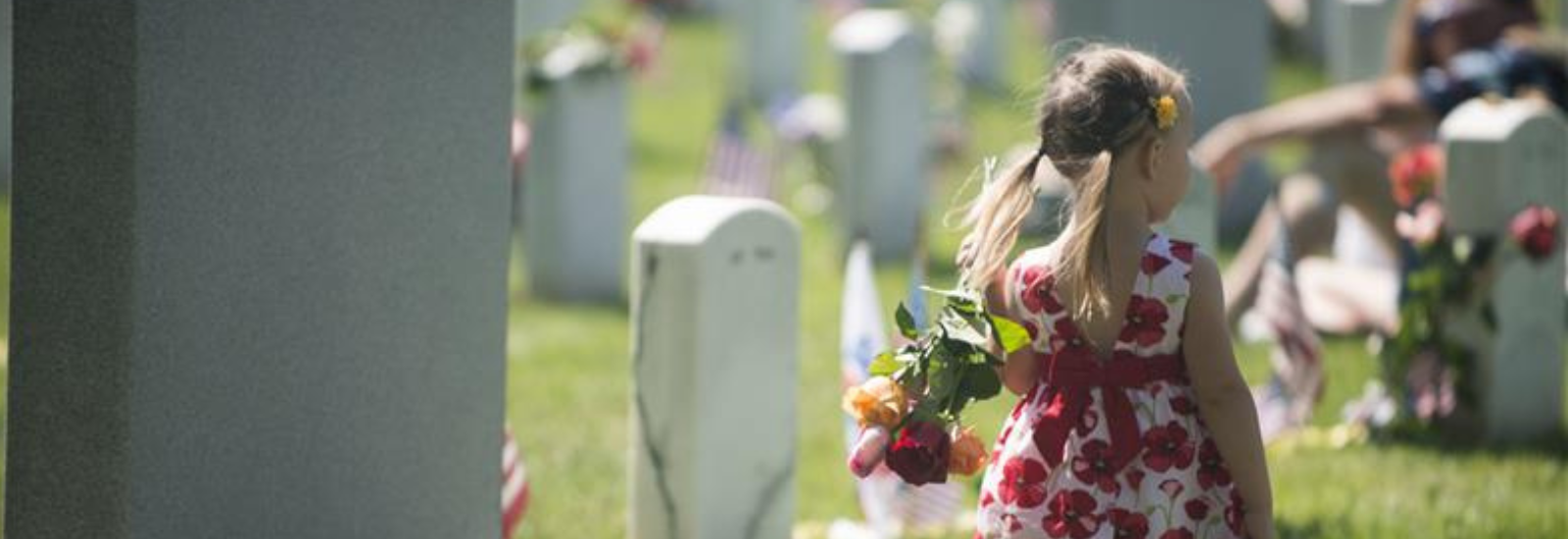
Call: 988 and press 1 for the Military Crisis Line.

Survivor Outreach Services is the official Army program designed to provide long-term support to Families of fallen Soldiers. If you are a surviving Family member, we are here for you. Survivors developed this program, and it is continually refined based on Survivor feedback and senior Army leader involvement.
SOS Coordinators and financial counselors provide outreach and support to survivors, regardless of a loved one’s Army component, duty status, location or manner of death. SOS serves Army National Guard, Army Reserve and active component Families at SOS offices across the country. There is no greater calling than to serve one’s nation with honor and dignity. For SOS, there is no greater duty than to support the Families of those who died in service to our nation.
All survivors of Veterans are encouraged to apply for federal student aid. Survivors may receive loans, grants and work-study options to help pay for college or career school. To apply students must complete the free application for federal student aid (FAFSA).
Students with a parent or guardian who died while serving in Iraq or Afghanistan after 9/11 may apply for an Iraq and Afghanistan Service Grant. To qualify, a student must have been under age 24 at the time of a parent’s or guardian’s death or enrolled in college or career school at least part time.
There is no application for the Iraq and Afghanistan Service Grant. The FAFSA will be compared with the file from the DOD, and the student will receive a letter explaining a potential increase in funding. Students must complete the FAFSA using their name as it appears in the Defense Enrollment Eligibility Reporting System (DEERS).
VA education benefits are available to many survivors and dependents of veterans.
For eligibility and program details, visit VA Survivor and Dependent Education Benefits.
Some survivors may be eligible for education benefits under the Post 9/11 Montgomery GI Bill. Eligible Soldiers may transfer their Post 9/11 Montgomery GI benefits to a spouse or dependent children.
Veterans service organizations, survivor groups and other local organizations provide opportunities for surviving family members. Contact an SOS coordinator for state, local and nonprofit resources.
Financial stability and security are an important part of supporting surviving Family members today and in the future. There are several resources for Families to help them adjust to financial changes and to plan wisely.
This service provides Servicemembers' Group Life Insurance beneficiaries with free advice from Financial Point, an independent company with a team of experts who handle many types of financial matters. Beneficiaries can access this service online 24/7 to request a financial plan. *Note: The service is available for two years from the date the claim is paid; it includes 40 hours of personal counseling and access to the program’s online resources. https://www.benefits.va.gov/insurance/bfcs.asp
This program provides general information about military benefits, spending plans, retirement, TSP, debt repayment, tax planning, identity theft, managing consumer credit, and consumer safety and rights. The Army’s personal financial counselors and managers (PFCs and PFMs) offer education. *Note: PFCs and PFMs cannot provide investment advice. To find a PFC or PFM, visit the Financial Readiness website: https://www.financialfrontline.org/.
The Heroes Earnings Assistance and Relief Tax Act of 2008 (HEART Act Public Law 110-245, §109) allows recipients of a death gratuity and/or SGLI to contribute all or part of the payments to a Roth IRA and/or a Coverdell Education Savings Account (CESA) without restrictions on contributions or distributions. Contributions must be made within one year of receiving the benefits. If you are the recipient of a death gratuity and/or the SGLI, you can protect and grow these assets for long-term financial security. For more information, read the HEART Act for Beneficiaries.
Military life can make for tricky taxes. To help, the Defense Department offers MilTax software through Military OneSource. It takes into account deployments, combat and training pay, housing and rentals, multistate filings, living OCONUS and more. Visit the website for more details: https://www.militaryonesource.mil/financial-legal/tax-resource-center/miltax-military-tax-services/.
Survivors who receive annuity pay from the Defense Department can access myPay, the online pay management system for the DOD’s Defense Finance and Accounting Service (DFAS). MyPay provides convenient access to information about your payments and lets you easily update your account information and submit your annual certification. Those who provide an email address in myPay can receive important messages from the DFAS about their account and information from their loved one’s branch of service.
There is a large menu of Frequently Asked Questions with answers on how to use myPay. You can browse more Frequently Asked Questions with answers or submit a question using AskDFAS. There are also helpful videos on using myPay.
The Survivor Benefit Plan is a program the Defense Department sponsors and subsidizes that provides up to 55 percent of a service member’s retired pay to an eligible beneficiary after the member dies. The program provides no-cost automatic coverage to active-duty members and to reserve members who die of a service-connected cause while performing inactive-duty training. In addition, those on active duty can purchase coverage upon retirement, and reserve members can receive coverage when they have 20 years of qualifying service for reserve retirement pay.
Need information about the repeal of the SBP-DIC offset? Please see: SBP-DIC Offset Phased Elimination News.The Army issues this pin to a widow or widower, to each of the parents, each child (natural or adoptive), stepchild, brother, half brother, sister and half sister of a service member who lost their life while serving in war or periods of armed hostilities, while engaged in military operations involving armed conflict with an opposing foreign force; while serving with friendly foreign forces engaged in an armed conflict in which the U.S. is not a belligerent party against an opposing armed force; while serving in a military operation outside the U.S. as part of a peacekeeping force; or who lost their life due to an international terrorist attack.
The Army issues this button to each widow or widower, to each of the parents, each child (natural or adoptive), stepchild, brother, half brother, sister and half sister of a service member who lost their life while on active duty or while assigned in USAR or ARNG units in a drill status. The terms “widow” and “widower” include those who have since remarried; the term “parents” includes mother, father, stepmother, stepfather, adoptive mother or father, and foster parents who stood in loco parentis.
Requests for replacements can be sent to the Army Human Resources Command; for instructions visit HRC Gold Star Lapel Buttons and next of Kin Lapel Buttons.
Factors may determine Tricare Health Care Coverage eligibility such as:
The following scenarios provide an overview of survivor coverage:
Spouses remain eligible unless they remarry.
The coverage for surviving spouses changes to that of a retired family member after three years. The change is automatically reflected in DEERS. Surviving spouses will receive a letter from DEERS before the survivor status changes. This status change will affect health care options and out-of-pocket costs.
Coverage for children doesn't change—they are covered as active-duty Family members until they age out of TRICARE or lose eligibility for other reasons.
Visit the Tricare Plans and Eligibility page for more information.
There are special housing benefit provisions for spouses and children of service members who die while serving. Eligible Family members living on base may continue to reside in base quarters for up to 365 days after the service member’s death.
Eligible Family members who do not live in government housing receive a housing allowance for up to 365 days after the service member's death.
Visit My Army Benefits or contact a survivor outreach coordinator for more information.
Surviving spouses must decide when and where to move. Different factors such as family support, student status or employment may affect that decision.
Spouses may relocate once at government expense. Eligible spouses must initiate the move by turning in household goods to the transportation office within one year after a loved one’s death. If a spouse is not ready to use the home of selection entitlement at one year, they may request an extension from the transportation office.
Extensions may be granted for up to six years. However, requests for extensions must be made yearly. Contact a survivor outreach coordinator or the transportation office at the installation nearest to you. Visit Military Installations and search for Household Goods to find a transportation office.
Visit Military One Source: The Final Move for more information.
Eligible surviving spouses can have unescorted access to military installations so they can receive benefits they are entitled to by law or policy. Next of kin to a covered member of the Army may also access military installations in accordance with the National Defense Authorization Act (NDAA) of Fiscal Year (FY) 2018. See Section 626.
If eligible next of kin do not have a military ID card, they will need the Army Survivor Access Card. With this card, next of kin can access services and attend events and memorials. To get or renew a Survivor Access Card, complete the APPLICATION FOR SURVIVOR ACCESS CARD (IMCOM Form 44) and submit the form to a survivor outreach services coordinator. This is the first step to getting a card.
As an Army Survivor, you will encounter multiple milestones that will affect your benefits and entitlements. These are based on either a specified timeline, your age or marital status. The team at Army Survivor Outreach Services encourages you to familiarize yourself with the milestones before they occur so that you can prepare your Family. You can use our Navigating Survivor Milestones guide to see the upcoming changes or look at the guides on specific benefits and entitlements. For more information, contact your Survivor Outreach Services coordinator.
The Army values its Families and offers surviving Family members the opportunity to be connected to the military for as long as they desire. The Survivor Advisory Working Group (SAWG) was established in 2007 and provides a direct opportunity for Army Senior Leaders to hear the voices of Army Survivors. The Army Survivor Advisory Working Group represents the community of Surviving Family members whose loved ones served in the regular Army, Army Reserve, and Army National Guard.
The Survivor Advisory Working Group meets virtually monthly to identify, evaluate, and provide recommendations on new issues, reopen previous issues, and refocus current issues.
Members meet in person with the Army Senior Leaders annually to discuss quality-of-life matters affecting Army survivors worldwide and provide recommendations about the concerns of Army Survivors.
Recent SAWG Accomplishments include:
The Army seeks three new group members each year. Candidates may be surviving Civilian or Active-duty Family members (Spouse, Parent or Child). Applicants should be active in their local Survivor Communities.
If you identify a concern and think that a change in Army policy could improve the quality of life for Survivors, send it to the Army SAWG Staff member. The SAWG Staff member will share your concerns with the Survivor Advisory Working Group members. To email the SAWG Staff member, click here.
The Army has a network of SOS coordinators at locations across the U.S. Contact phone numbers are listed by state and county, or by country.
Contact the Army Gold Star and surviving Family member representative at:
Phone: 210-834-0494
IMCOM toll free number: (833) 313-1960
Email: SOS Survivor Advocate
The Survivor Symposium Series underscores the Defense Department’s commitment to providing support for survivors of active-duty deaths. This virtual event focuses on educating surviving family members of service members who died while on active duty about their survivor benefits, entitlements and available resources - as well as addressing any questions or concerns they may have.